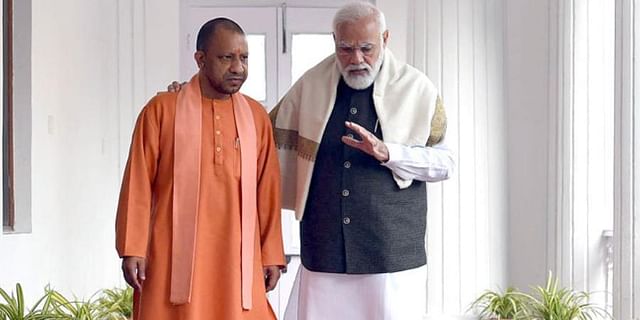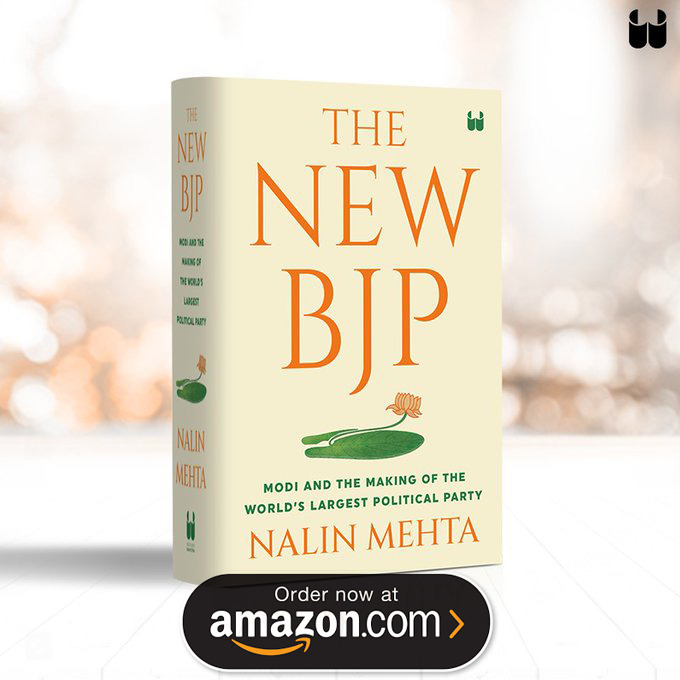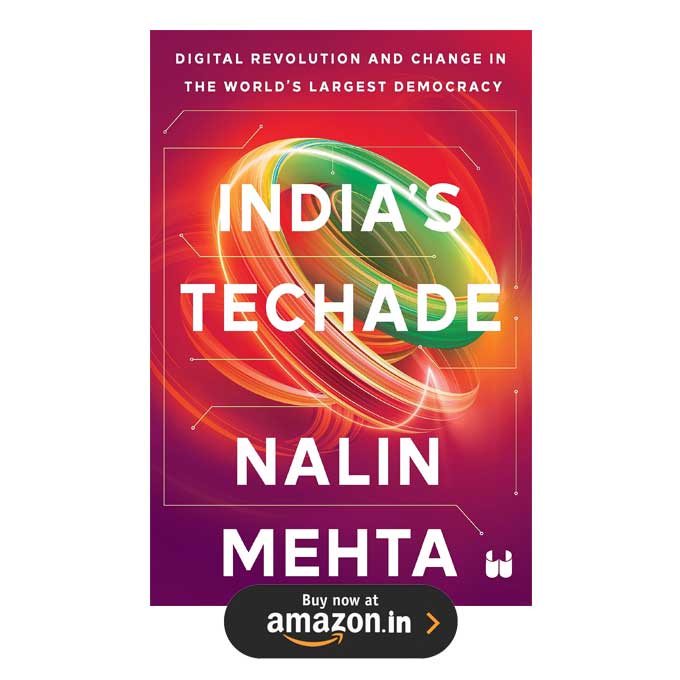This review of Nalin Mehta’s ‘The New BJP’ appeared in The Federal News on 16 January, 2022.
All eyes are on this crucial assembly election. Between mid-February and the first week of March, the key northern state of Uttar Pradesh goes to the polls. If the BJP wins, it would not just be an endorsement for Yogi Adityanath; it would be an advertisement for the invincibility of the Prime Minister, Narendra Modi, and his brand of inclusive development politics: sab ka sath, sab ka vikas.
Yet, after the exit of ten OBC legislators from the BJP, last week, including three ministers, a glimmer of doubt must have risen in the electorate if the backward sections of the voters have benefited from the Adityanath administration, given its blind faith in the Modi model.
It is in this context that a book by Nalin Mehta, The New BJP ( Westland; pages 809, price: ₹ 999) reads dangerously close to the truth that has been emerging in the forefront since 2014.
It is dangerous in the sense that progressives and liberals have been completely blind to reality. That the agenda of the Nehruvian welfare society, primarily associated with the ‘well-meaning, secular and socialist’ Congress regimes, has been hijacked and implemented with far greater rigour to the benefit of a vastly greater number of people. As a neutral political observer, I have been saying this for years.
To their credit, Nalin Mehta and his team have done monumental research and have come up with an impressive amount of data in chapter after chapter on how this has been done.
The book ‘uses fresh empirical evidence to demonstrate how the new BJP built novel caste alliances, reshaped class relations, tapped into gender structures and developed a new targeted politics of welfare within searing with religious tensions.’
Nalin Mehta does an excellent job of mapping India’s transition from the default position of reliance on Congress to that of viewing BJP as an agent of change.
And, the questions he asks are fundamental to our understanding of the present day reality, which Liberals and the Left tend to see as an aberration engineered by the BJP and driven by its divisive cultural politics.
This is because there is great potential for virtue-signaling in this perspective, the urban elite and associated Group Rightists may think they are in the right, especially since they are talking among themselves in mutually endorsing bubbles.
Very often, too, that is why while Modi’s speech could be unending material for ‘superior’ trolls, it nevertheless goes over our shampooed and jelled urban heads right into the hearts of the rural population.
As Nalin Mehta asks: ‘Why did the BJP start winning on this scale? Was it only because of a cultural shift in India? Or was its edifice of expansion built on creating a much wider, deeper superstructure of new constituencies of voters who aligned with it for reasons beyond the cultural divide? How did the BJP’s growth patterns differ across India’s religions, in new catchment areas where it had never held sway before, or in areas where it failed to make inroads? In other words, what really was happening in India, how did the BJP systematically become the country’s largest political party and its fulcrum of power?’
To find out, Nalin Mehta and his associates created a ‘new archival data-mining software, NARAD, (Normative Analysis of Reporting and Discourse)’. With this, they built up an original database of BJP-related documents between 2006 and 2019, running to 17.9 million words. The patterns in the documents were woven together with the help of AI.
One of the main conclusions of the research is that no other party has attached so much importance and with such success to ensuring that welfare schemes reach their target audience, including cash to bank transfers. As a result, as the number of beneficiaries increases, so does the BJP’s catchment area of votes.
In short, Modi is doing a far better job of executing Nehru’s legacy than perhaps Nehru himself or his heir, Indira Gandhi. This is probably the reason why the BJP sees Nehru as passe. Nehru was the architect of modern India, why, Modi is the architect of post-modern India.
From this vantage point, it is easy to see, for example, why the BJP is literally changing the face of the Central Vista in Delhi stone by stone, and why they are building a new Parliament, and turning the present one into a museum: Nehru’s India has been relegated to the status of a curio.
The superior moral attitude that the Congress-led Opposition and urban social circles strike are of no real consequence. They may win a few parlour points on social media, which in The New BJP comes in for extensive analysis. But even here, the ability of the BJP to go for the jugular, which in the current climate of intolerance of differing views, is often a little below the belt, is far more in bloody evidence than an effete, intellectualised Opposition.
The family that has money coming in from the PM’s funds straight into their bank accounts, or get free cooking gas, or a new toilet, cannot but vote for its benefactor. Nothing cements loyalty as much as charity.
This article is not meant to be a review of The New BJP. It is just a relieved reaction to the mass of data that Nalin Mehta presents as to why the BJP is unstoppable in the foreseeable future. Why relieved? Because facts seem to endorse what one has been saying all along: that the Congress and the Left have lost the Indian plot for a long time now. They are increasingly made irrelevant because their own progressive policies are better executed by a ‘reactionary’ party.
This is why when Swamy Prasad Maurya, a former labour minister in the Adityanath ministry and an OBC leader, led an exodus of sorts to Akhilesh Yadav’s Samajwadi Party, it came across as crass opportunism. If the Adityanath administration, as Maurya says, is unable to reach welfare schemes to the target audience in sufficient numbers that criticism should have been made earlier; not on the eve of the state elections.
But such empty gestures are in keeping with the character of Indian politics. The fact appears to be that Adityanath, for all his excesses, has been and is seriously intent on ensuring that the freebies reach the people. Mehta gives several direct instances of Adityanath’s incorruptibility, a trait he shares with Modi, when it comes to this aspect of his administration.
The chances are that in UP, Adityanath will win again. And that leaders like Maurya will shift loyalties in the near future once again. These are the tropes of the discourse. But the discourse itself is dominated by the BJP.
In his book, Nalin Mehta shows with the help of statistics that the BJP is the New India. It is a hard thing to accept. Who wants to believe Modi is going to be the PM for the next 20 years? Indeed, how boring, but that is what it is. A new India is in the making. And to unmake it will take more than what the ineffectual Opposition is capable of at present.


